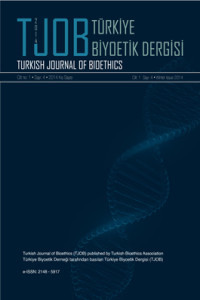Hemşirelik Son Sınıf Öğrencilerinin Akademik ve Klinik Stres Düzeyleri ve Meslek Algıları
Meslek seçiminde, mesleğe uyum sağlamada ve verimli bir çalışma yaşamı sürdürmede o mesleğe ilişkin olumlu bir görüş ve tutuma sahip olmak mesleğin gelişimi açısından önemlidir. Bu adayların hemşirelik algısı motivasyonlarını, özgüvenlerini, diğer disiplinlerin üyeleri ve hastalarla olan ilişkilerini etkileyebileceğinden önemlidir. Bu çalışmanın amacı, lisans hemşirelik öğrencilerinin akademik ve klinik stres düzeylerini ve hemşirelik mesleğine ilişkin algılarını belirlemektir. Yöntem: Araştırma verileri “Tanıtım Formu”, “Hemşirelik Mesleğini Algılama Ölçeği (HMAÖ)” ve Hemşirelik Eğitimi Stres Ölçeği kullanılarak toplanmıştır. Araştırma örneklemini son sınıf 183 hemşirelik öğrencisi oluşturmuştur. Bulgular: Öğrencilerin stres ölçek toplam puan ortalaması 67,36+1,48, meslek algısı ölçek toplam puan ortalaması 88,95+1,32. Öğrencilerin stres ölçek alt boyutlarında akademik stres puan ortalaması 33,78+7,79, uygulama stres puan ortalaması 33,57+7,83’tür. Öğrencilerin hemşirelik mesleğini seçmeleri ile akademik stres puanları arasında anlamlı bir fark bulundu. Sonuç: Çalışmada kız öğrencilerin erkeklere göre daha yüksek oranda hemşireliği seçtiği; katılımcıların yarısından fazlasının ilk beş tercihinde hemşirelik olduğu ve mesleği seçmekten memnun oldukları bulundu. Ayrıca öğrencilerin %80,90’ının iş garantisi nedeniyle mesleği seçtiği bulundu.
Anahtar Kelimeler:
hemşirelik öğrencisi, klinik, stres, akademik eğitim, meslek algısı
Academic and Clinical Stress Levels and Profession Perceptions of Nursing Senior Students
It is important to have a positive opinion and attitude when choosing and adapting to a profession and maintaining a productive working life. Nursing perception of final year students of vocational motivation, confidence, health professionals are important and affect their relationship with patients. The aim of this study is to determine the academic and clinical stress levels of undergraduate nursing students and their perceptions of the nursing profession. Methods: Data has been gathered using “Information Form”, “Nursing Profession Perception Scale” and “Nursing Education Stress Scale”. The sample of 183 senior nursing students. Results: Stress scale average score was 67.36+1.48. Students’ profession perception scale mean was 88.95+1.32. Stress scale’s academic stress subscale score average was 33.78+7.79 whereas the application subscale score average was 33.57+7.83. There is a significant difference between students’ choice of the nursing profession and the academic stress scores. Conclusion: Female students chose nursing as a profession at a higher rate than males; more than half of the participants had nursing in their first five choices and are satisfied with that choice also, 80.90% of the participants chose this profession due to job security.
Keywords:
nursing student, clinical, stress, academic training, profession perception,
- ISSN: 2148-5917
- Yayın Aralığı: Yılda 4 Sayı
- Başlangıç: 2014
- Yayıncı: Türkiye Biyoetik Derneği
Sayıdaki Diğer Makaleler
Hemşirelik Son Sınıf Öğrencilerinin Akademik ve Klinik Stres Düzeyleri ve Meslek Algıları
Serpil İNCE, Rana CAN ÖZDEMİR, Nigar ÜNLÜSOY DİNÇER
Ölüme ve Ölmeye Dair Ölümsüz Bir Eser: Elisabeth Kübler-Ross’un “Ölüm ve Ölmek Üzerine” Kitabı
Uyum Bozucu Gündüz Düşleri: Psikiyatri Etiği Açısından Yaklaşım
